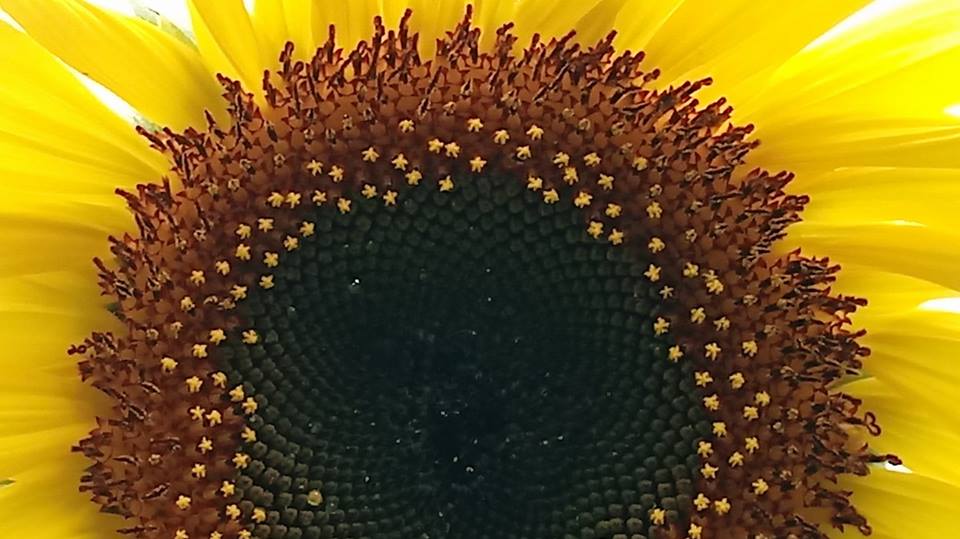 In this summer of the Total Eclipse, all eyes have been turned (hopefully with appropriate protective eyewear) to the sun. (Interesting factoid: according to the New York Times, if the eclipse had been a television program, it would have received the highest ratings of all time. I find that reassuring, somehow.)
In this summer of the Total Eclipse, all eyes have been turned (hopefully with appropriate protective eyewear) to the sun. (Interesting factoid: according to the New York Times, if the eclipse had been a television program, it would have received the highest ratings of all time. I find that reassuring, somehow.)
Anyway, I’ve also been turning my eyes towards sunflowers.
Sunflowers look like a single big flower with a lot of petals. But these gorgeous giants have a structure that’s much more complex than it appears. Each “flower” is actually a flower head, a composite group composed of a cluster of many small flowers. And each flower can develop a single seed called an achene.
So where are these multiple flowers? Look closely. They’re the little yellow stars in the dark center.  They’re called disk flowers because they’re carried on the central disk.
They’re called disk flowers because they’re carried on the central disk.
The big yellow “petals” that surround the disk are actually flowers as well–they’re called ray flowers, because they shoot out of the sides of the disk like a ray of sun. The funny thing is that these ray flowers don’t produce seeds—their only function is to capture the attention of pollinators. Those bright yellow rays are the advertisement, saying “Nectar here!”
In some varieties of sunflower, the little disk flowers bloom all at once. In other varieties, they bloom in a concentric circle, starting at the edge and working their way in over the space of several days. This gives sunflowers a look of individuality, no two alike. It’s hard not to see faces in them.
The continually blooming disks are also filled with nectar for pollinators, which is why sunflowers are often crawling with honeybees, bumblebees and butterflies as well as other, less photogenic pollinators like moths and beetles.
I remember once driving down a Nebraska dirt road lined with sunflowers. I must have been driving west, and the sunflowers were all facing east (as sunflowers tend to do) and it was exactly like driving past crowds of waving, smiling people. 





Recent Comments